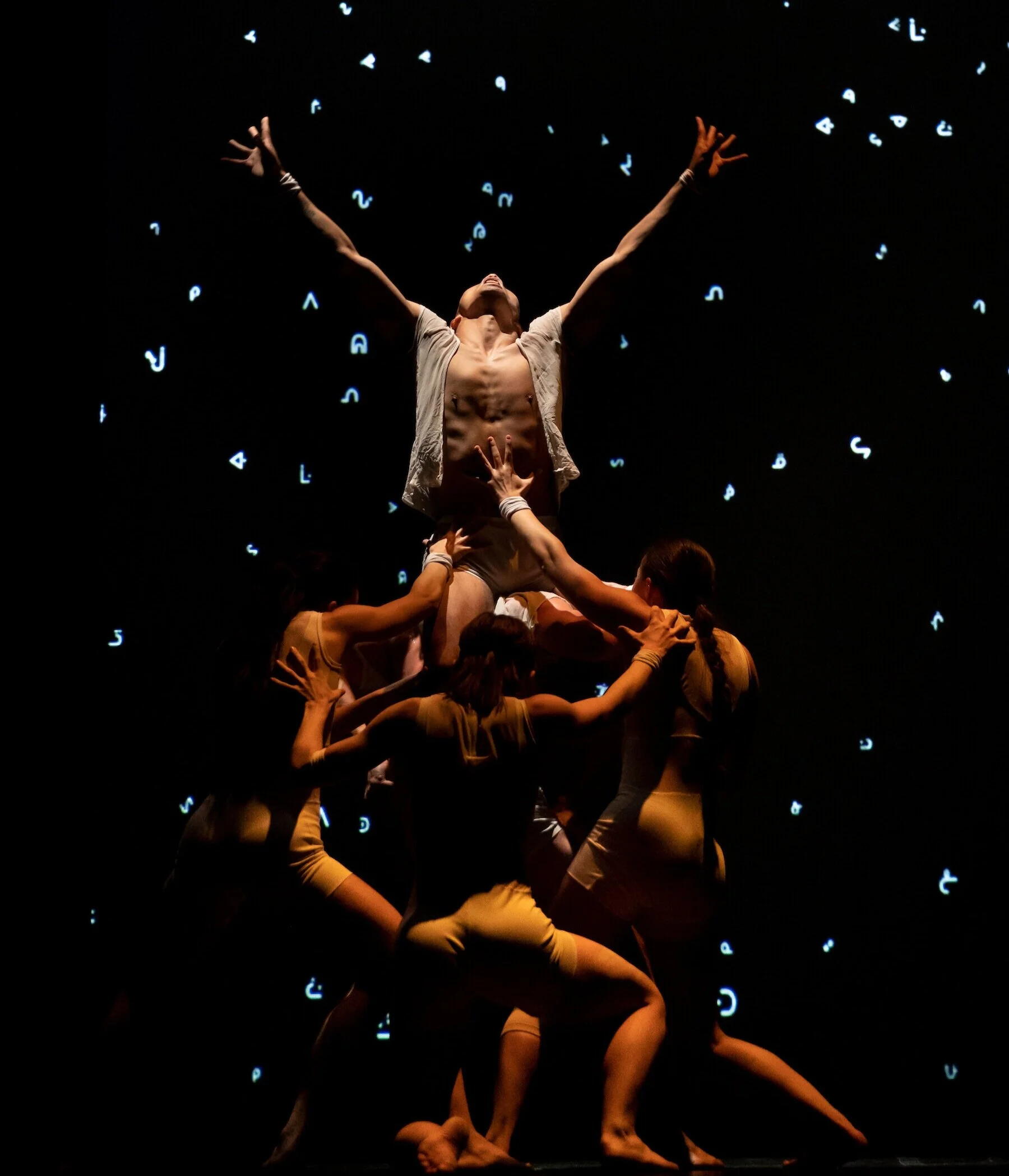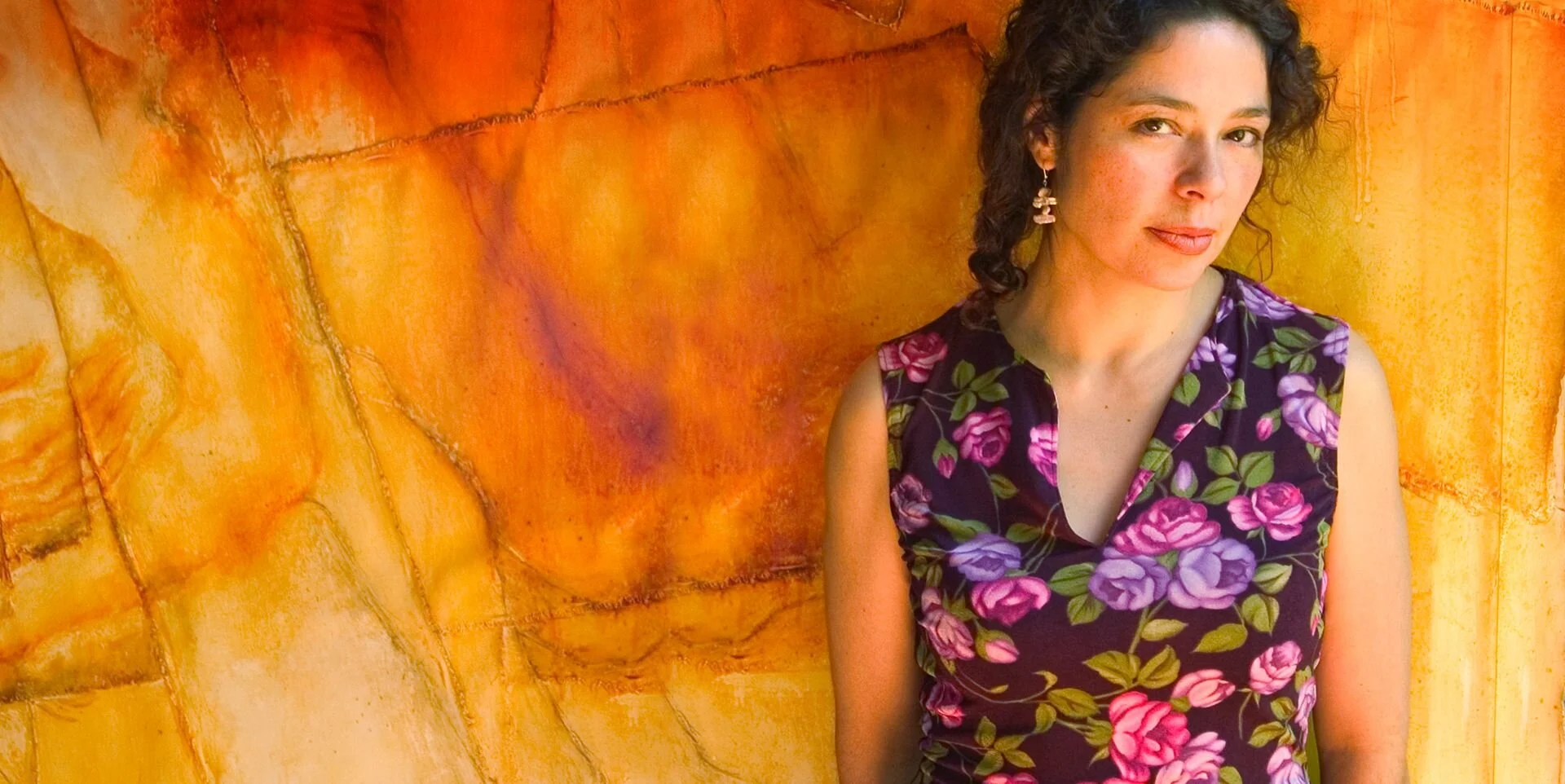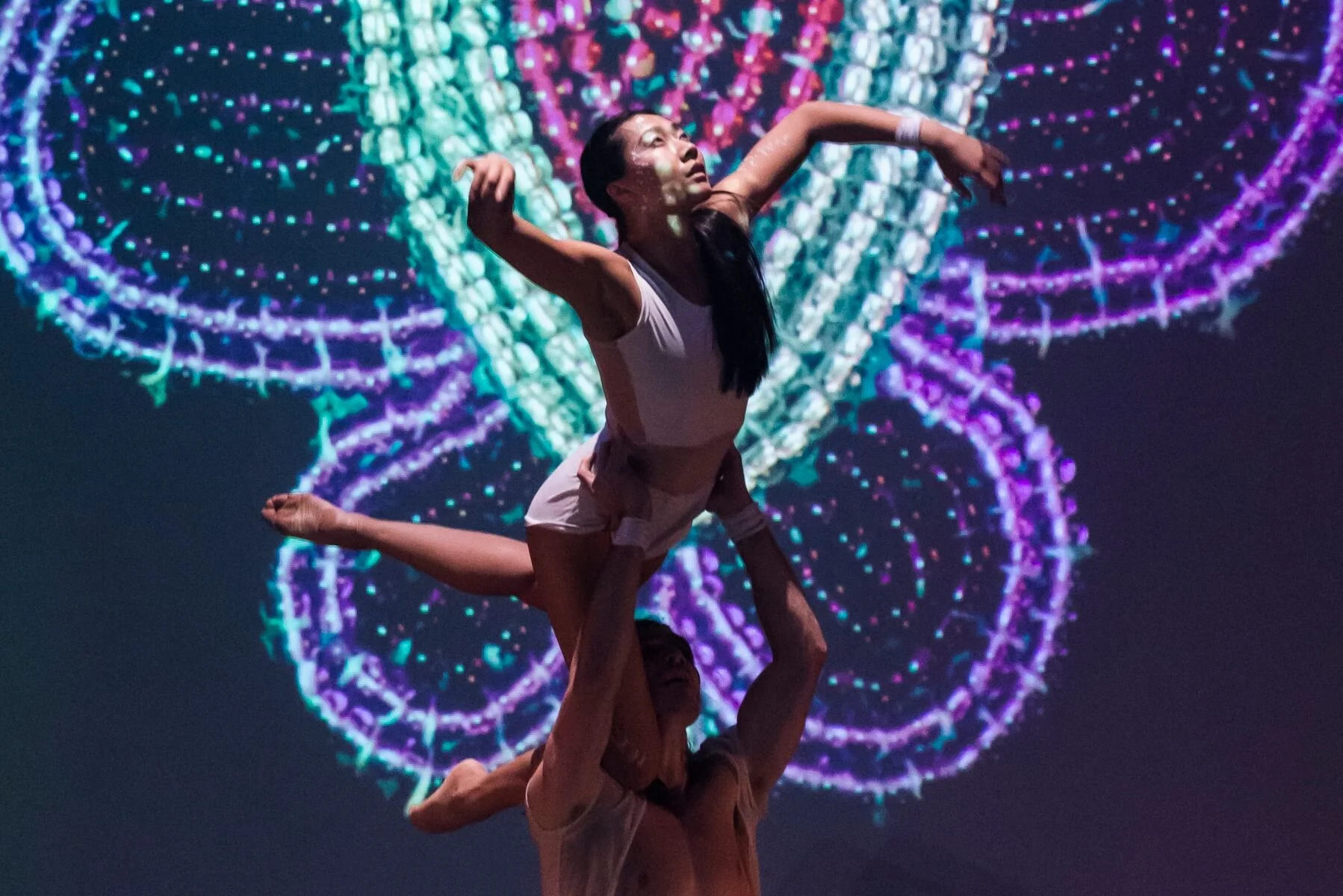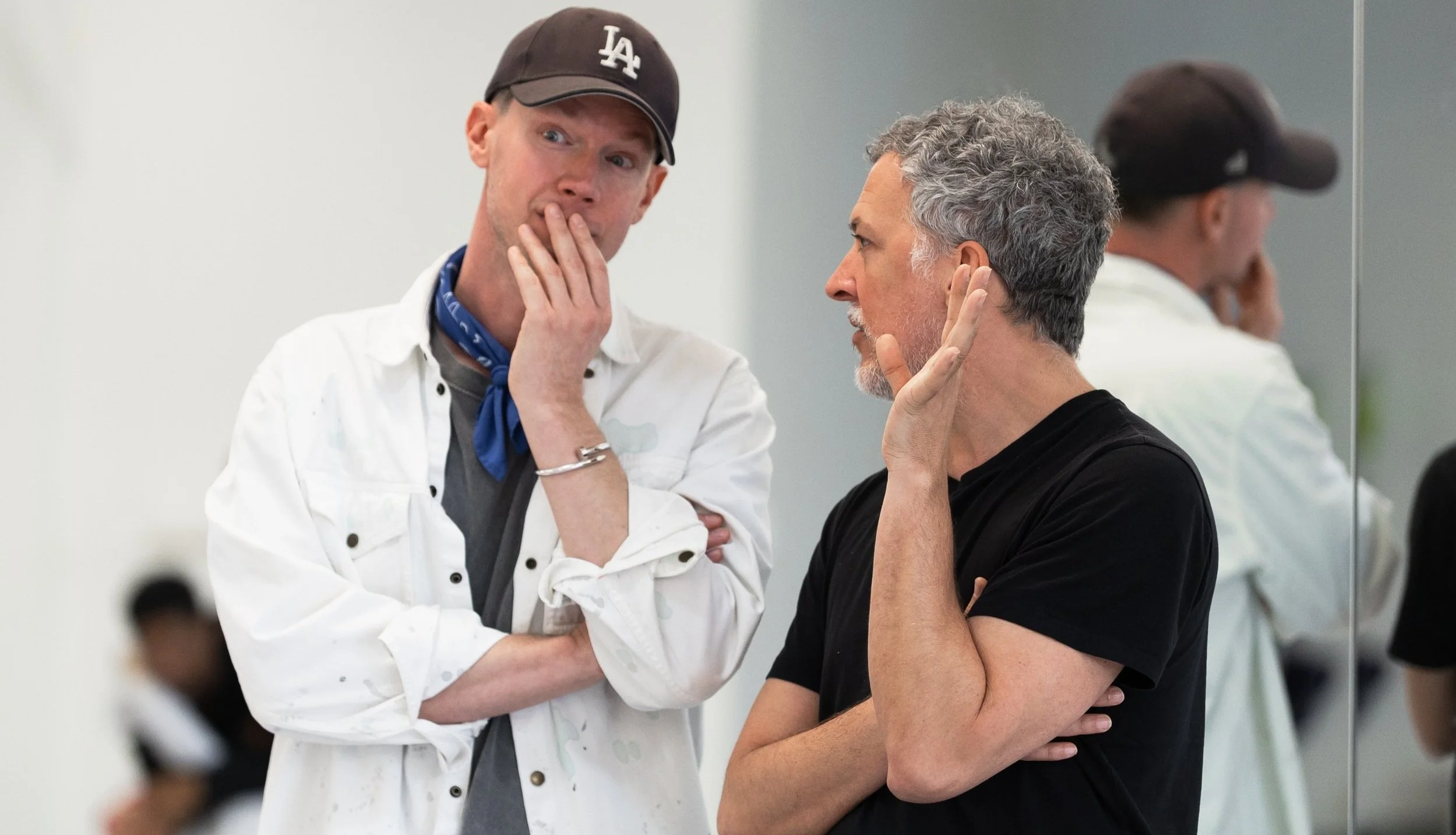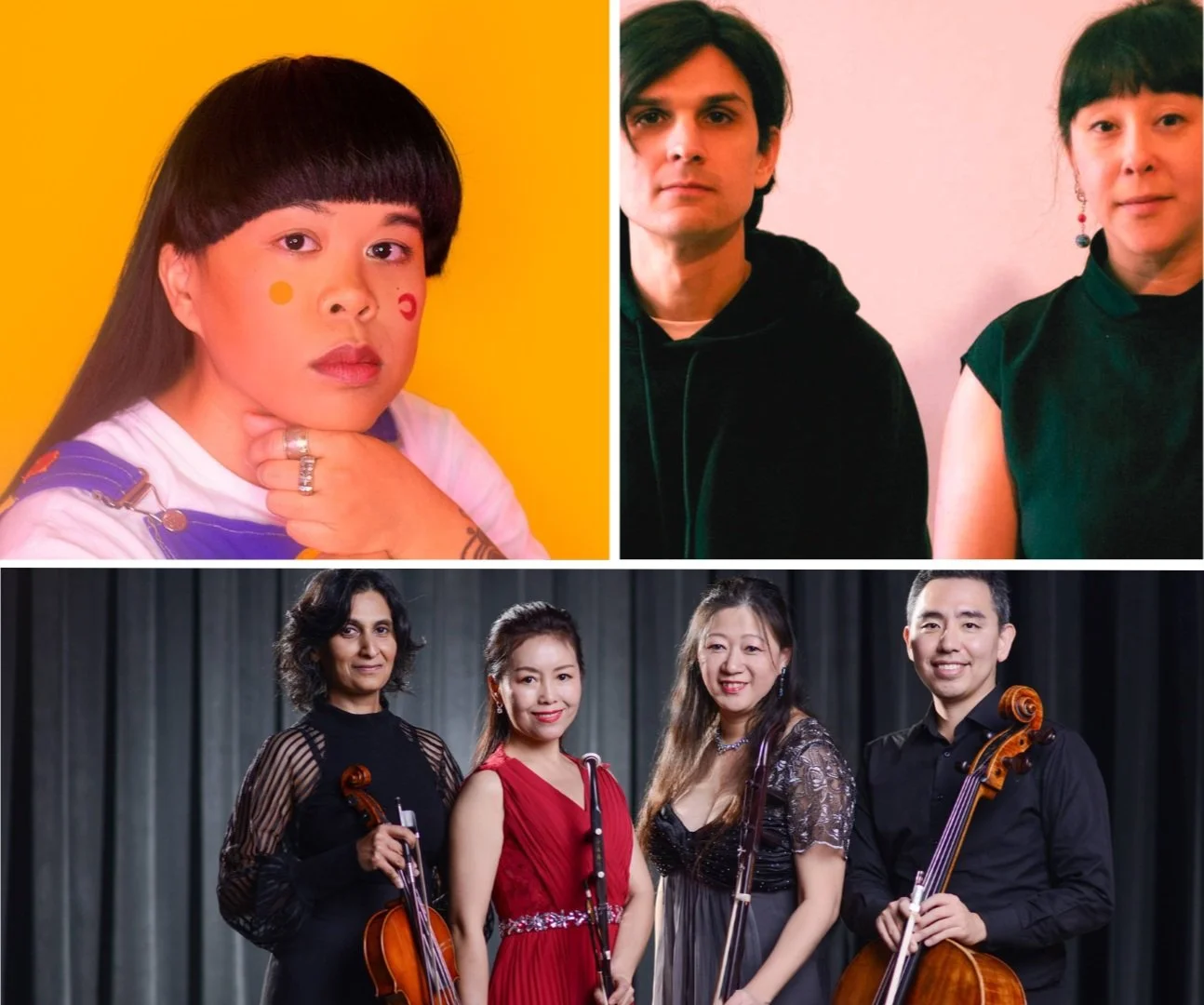New Digidance film celebrates Red Sky Performance's 20th year of sharing Indigenous worldviews
More Than Dance, We Are A Movement features excerpts of works and interviews with the arts group’s founder, Sandra Laronde
Excerpts of Red Sky Performance’s Trace are featured in the Digidance film More Than Dance, We Are A Movement. Photo by Marc J. Chalifoux
Digidance presents More Than Dance, We Are A Movement, Celebrating 20 Years of Red Sky Performance, streaming April 14 to 20.
WHAT DO YOU see when you look up at the night sky? Maybe you notice Orion’s Belt, the constellation named after a mythical Greek hunter. Perhaps you spot Jupiter, which takes its name from the king of the ancient Roman gods. Sandra Laronde, who also goes by Misko Kizhigoo Migizii Kwe, sees the starry sky another way, the way of her people, Teme-Augama-Anishinaabe (People of the Deep Water), from Temagami, northern Ontario.
“The Milky Way is the thing I think about when I look at night sky,” Laronde, executive and artistic director of Red Sky Performance, tells Stir. “I think about our stories, the Milky Way being the path of souls, or the river for souls to travel….When I look at the stars twinkling, as Anishinaabe, we believe we come from there, we believe we come from the core of a star a long time ago, and we will return. But when we go back there, we’ll travel along that Milky Way path, that pathway of souls. That’s one thing I think about when look up at night sky.”
Laronde also considers shapes and forms that the darkness creates, not just patterns outlined by bright lights. Her dance-centred company explores Anishinaabe sky and star stories in Trace, a kinetic contemporary work that offers a glimpse into Indigenous ancestral origins. She can’t help but wonder why more people across the country aren’t familiar with these kinds of legends.
“It doesn’t necessarily occur to people in Canada that when they look up at the night sky that they learn Greek and Roman stories,” says Laronde, whose ancestral name means “Red Sky Eagle Woman” in the Anishinaabemowin (Ojibway) language. “In Canada, why are we learning Greek and Roman stories when we look up at our night sky? What does the night sky look like from an Indigenous perspective? What are the patterns that we see? Within the night sky and the star stories is the cultural psyche of a people. So as Canadians we are learning more about the cultural psyche of Greek and Roman [people] than we are about Canadian, than we are about Indigenous people. Then Canadians wonder: who are we as Canadians? We don’t know who we are….We borrow so much from Europe in terms of stories, aesthetic, art forms… I really, truly believe that Canadians have yet to know who they are, and part of the key lies in Indigenous identity, the Indigenous way of seeing the world.
“Red Sky is deeply interested in the stories that come from this land, that are inspired from this land, this soil, this place,” she says. “Those are the stories I’m interested in. I’m not so interested in looking to Europe and having them become Euro-Canadian stories. I’m interested in our stories. If people learned our origin stories about Canada, I truly believe people would have a very different relationship with the natural world, with nature, with their surroundings, the environment, and ultimately themselves. It’s not a transplanted story.”
Trace, which opened in Toronto in 2018 and had its international premiere at Jacob’s Pillow Dance Festival in the US in 2019, earned two Dora Mavor Moore Awards.
Extended excerpts of the work feature in More Than Dance, We Are A Movement, a Digidance feature film made in celebration of the company’s 20th anniversary.
The film also includes excerpts from Miigis, signifying the “perfect breath” of life, a symbol that informs the Indigenous origin story of travel from the Atlantic Coast to the Great Lakes. Having premiered as a site-specific work at Fort York in Toronto in 2017 and toured to the Venice Biennale in 2018, it received the Lieutenant Governor's Ontario Heritage Award for Excellence in Conservation. The Digidance production has interviews with Laronde and Red Sky collaborators, encapsulating the company’s history and its rise to one of the world’s leading Indigenous art and performance organizations. (Digidance is a joint initiative of Vancouver’s DanceHouse, Toronto’s Harbourfront Centre, the National Arts Centre in Ottawa, and Danse Danse in Montreal. It came about in response to COVID-19 as a way for the presenters to deliver exceptional, full-length, Canadian and international dance content online.)
To date, Red Sky has performed in 17 countries on four continents, including two Cultural Olympiads (Beijing and Vancouver), the World Expo in Shanghai, and the Venice Biennale, among other notable events, while also appearing in urban and rural communities throughout Turtle Island, a name for North America used by many Algonquian- and Iroquoian-speaking peoples. Laronde is recognized for playing a pivotal role in the resurgence of Indigenous culture across Canada and beyond.
Red Sky Performance executive and artistic director Sandra Laronde.
As the title of the Digidance film makes clear, Red Sky’s mission is about so much more than dance. For one, the organization has always incorporated other art forms, including theatre, live music, image, video, multimedia, vocals, and more, all infused with Indigenous culture, making it a more of a multidisciplinary company. But its purpose goes much deeper than that.
“Often we’re called a ’dance troupe’ or ‘dance group’, and it just doesn’t sound expansive enough or strong enough for what we do,” Laronde explains. “Indigenous themes, Indigenous aesthetic, Indigenous ethos—which partly makes up the content—create a whole other layer of the movement.
“We’re a movement, too, because it wasn’t that long ago in Canada as Indigenous people that we were not allowed to dance our dances, sing our songs, tell our stories, or even play our own music….A lot was banned or outlawed. We didn’t have the vote in Canada till 1960.
“To see a company such as Red Sky rising during this time over the last 20 years, during this time of great cultural resurgence or cultural reckoning as some people have called it, the timing of it is so important where we’ve come in. Here after 20 very successful years, not just in Canada but worldwide, all of those things conjure the sense of a movement, of a happening.”
Red Sky’s work, and that of other Indigenous arts organizations, has a place in reconciliation, Laronde says. The company created Mistatim, a story about reconciliation, specifically for children, for example; over the last seven years, more than 1 million kids have seen it.
“One of the most powerful things that reconciliation could do is for our stories to be part of the narrative of Canada,” Laronde says. “Once people know our stories, we are contributing to an Indigenous canon in Canada.
“One of the things that was so potent about the Truth and Reconciliation [Commission] was people telling their stories of what happened to them in residential schools—it’s so powerful and liberating, to some extent, to be able share those stories; it’s something really transformative. As artists, part of our job is to be truth-tellers and galvanizers, trying to bring people to a good mind and a good place.”
Red Sky Performance, Trace. Phot by Rob DiVito
While the mandate of Red Sky has never wavered, the company has become more confident in its ability to tell its own stories over the last two decades, Laronde says. She has also become increasingly interested in turning to sentient beings other than humans for inspiration, aligning with the Indigenous view that everything is interconnected and of “all my relations”—we are all related to each other and all living creatures.
The company has a three-month tour of Canada and the U.S. planned for this fall; given the pandemic, time will tell. For the time-being, Laronde is hopeful people will come to discover Red Sky, and take in more Indigenous stories, via the Digidance production.
“This film is a really good way into our work,” she says. “And we invite people to come on the journey with us and be part of this movement.”
For more information, visit Digidance-DanceHouse.


